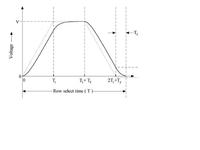kingmakerbull
Junior Member level 1
I am using a simple RC series circuit for a project. The excitation is a trapezoid with a period T.
For the figure shown below, I have calculated the voltage of the capacitor when the input is rising ramp. I am in trouble when i try for the falling ramp. Can anyone help me in deriving the capacitor voltage for the time Tt+Tf to 2Tt+Tf.

Thanks in advance
For the figure shown below, I have calculated the voltage of the capacitor when the input is rising ramp. I am in trouble when i try for the falling ramp. Can anyone help me in deriving the capacitor voltage for the time Tt+Tf to 2Tt+Tf.

Thanks in advance